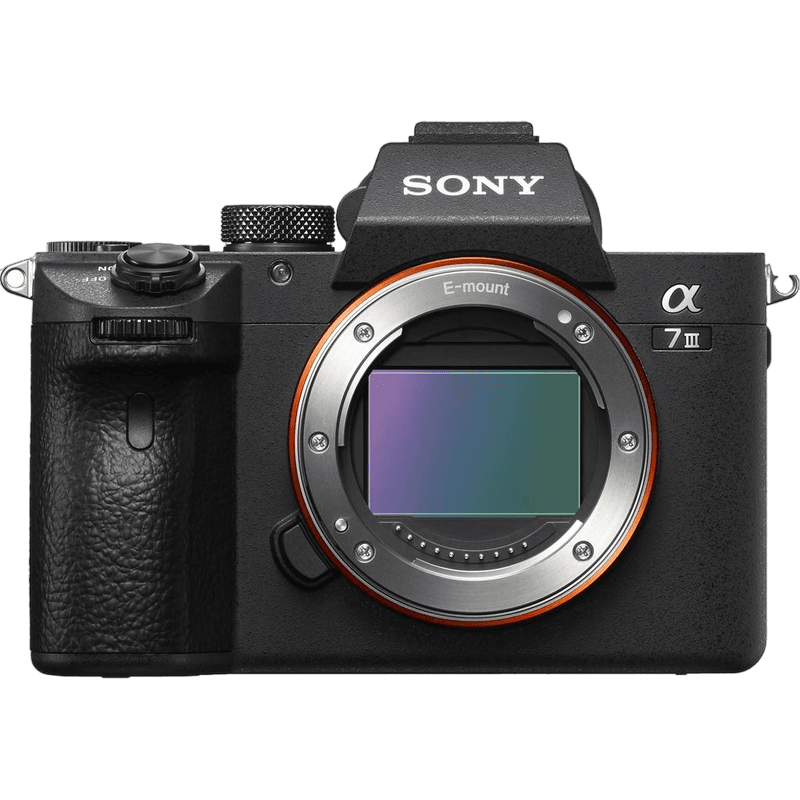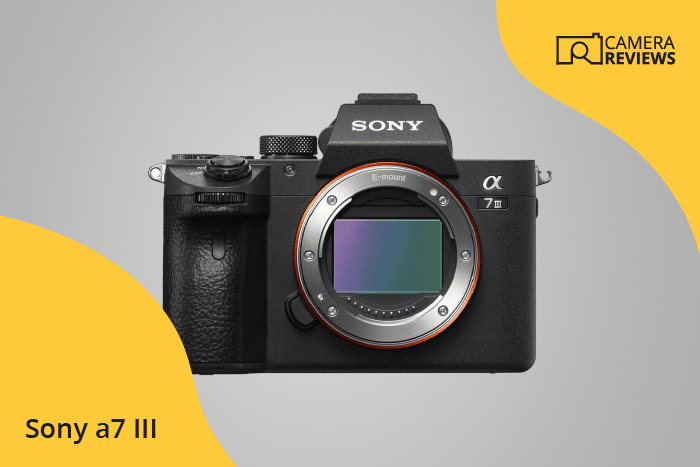Sony a7 III Specs and Scores

The Sony a7 III scores an impressive 81 in our evaluation. Announced on February 27th, 2018, this mirrorless camera entered the market at a launch price of $2000. With dimensions of 127 x 96 x 74mm and a weight of 650g (1.43lbs), the a7 III has maintained its relevancy in today’s competitive camera market. Its specs offer great value for photographers seeking a reliable and user-friendly device. The Sony a7 III continues to be a solid choice for those looking to invest in a high-quality camera.
Sony a7 III Overview and Optics
The Sony a7 III receives an optics score of 81/100. This camera features 24.2 megapixels, a shooting speed of 10 frames per second, and a CMOS sensor type. It is equipped with a Bionz X processor and has a DXOMARK score of 96 for the sensor. The sensor size is full frame, and the lens mount is Sony FE. Additionally, the camera includes image stabilization and an aspect ratio of 3:2.
In today’s market, the Sony a7 III holds a strong position due to its impressive specifications. The 24.2-megapixel sensor and 10 fps shooting speed provide high-quality images and fast performance. The full-frame sensor size and Sony FE lens mount offer compatibility with a wide range of lenses, allowing for versatility in various shooting situations.
The image stabilization feature ensures steady shots, even in challenging conditions, making the Sony a7 III a reliable option for those seeking a high-performing camera.
Sony a7 III Video Performance
The Sony a7 III receives a video score of 56/100, which is a moderate rating. The camera offers a maximum video resolution of 4K, with dimensions of 3840 x 2160 pixels. This resolution is standard for modern cameras and delivers high-quality footage. The camera’s maximum video frame rate is 30fps, which is sufficient for most users but may fall short for those seeking ultra-smooth video.
The camera still provides quality video capabilities for its price range. While the video performance may not be groundbreaking, the Sony a7 III remains a reliable choice for photographers who venture into videography.
Sony a7 III Features and Benefits
The Sony a7 III earns a feature score of 81 out of 100, showcasing its impressive capabilities. Equipped with a 3-inch screen and a resolution of 921,600 dots, the camera provides a clear and sharp display. It also includes a touchscreen and a flip screen, offering versatility in shooting angles and ease of use.
In today’s competitive market, the Sony a7 III stands out with its modern features. Although it lacks GPS, it compensates with built-in WIFI and Bluetooth connectivity, enabling seamless sharing and transfer of photos and videos. The camera’s specifications make it a strong contender among other mirrorless cameras.
The Sony a7 III proves to be a reliable camera choice with its array of features and user-friendly options. Its performance and capabilities make it a valuable tool for photographers and videographers alike.
Sony a7 III Storage and Battery
The Sony a7 III’s storage and battery performance earns a score of 68 out of 100. The camera houses two memory card slots, compatible with SD, SDHC, SDXC, Memory Stick Duo, Pro Duo, and Pro-HG Duo cards. This provides users with various options for storing their photographs and videos.
In terms of battery life, the Sony a7 III can capture up to 750 shots using the NP-FZ100 battery type. Unfortunately, the camera lacks USB charging capabilities. Despite this drawback, the battery life is still respectable compared to other cameras in the market.
Taking into account the storage options and battery life, the Sony a7 III proves to be a reliable choice for photographers who require a versatile camera for their work.
Sony a7 III Alternatives
Do you want to know how the Sony a7 III compares to its competitors? Have a look at the most popular comparisons for this camera below:
- Sony a7 III vs a7R III
- Sony a7 III vs a7C
- Sony a7 III vs a7 IV
- Canon EOS R10 vs Sony a7 III
- Sony a7 II vs a7 III
- Canon EOS R7 vs Sony a7 III
Sony a7 III FAQ
Does the Sony a7 III Have Built-in Image Stabilization?
Yes, the Sony a7 III features a 5-axis built-in image stabilization system, which helps to reduce camera shake and produce sharper images in various shooting conditions.
Does the Sony a7 III Support 4K Video Recording?
Yes, the Sony a7 III supports 4K video recording at up to 30 frames per second, providing high-resolution and detailed footage for professional and enthusiast videographers.
What Size Sensor Does The Sony a7 III Have?
The Sony a7 III features a full-frame 24.2-megapixel Exmor R CMOS sensor, offering excellent image quality and dynamic range in both stills and video.
Does the Sony a7 III Have a Dual Memory Card Slot?
Yes, the Sony a7 III is equipped with dual SD memory card slots, allowing for flexible storage options and the ability to backup or separate files while shooting.
Does the Sony a7 III Have a Touch Screen?
Yes, the Sony a7 III has a 3-inch tilting touchscreen LCD, which allows for intuitive control of camera settings, touch focus, and easy image review.
Does the Sony a7 III Have Wi-Fi and Bluetooth?
Yes, the Sony a7 III has both Wi-Fi and Bluetooth capabilities, enabling wireless image transfer, remote control of the camera, and easy sharing of photos and videos.
Does the Sony a7 III Have GPS?
No, the Sony a7 III does not have built-in GPS. However, location data can be added to images by connecting the camera to a compatible smartphone via Bluetooth.
Is the Sony a7 III Weather Sealed?
Yes, the Sony a7 III features a weather-sealed body, offering protection against dust and moisture, making it suitable for shooting in various environments and conditions.
Does the Sony a7 III Have a Built-in Flash?
No, the Sony a7 III does not have a built-in flash. However, it does have a hot shoe mount that supports external flash units for additional lighting when needed.

